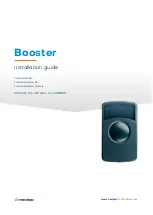
G&B Specialties Inc.
535 West 3
rd
Street, Berwick, PA, USA Tel: 1-570-752-5901 Fax: (570) 752-639
2.0
R
AIL
W
HEEL
L
OAD
A
DJUSTMENT
The percentage of the vehicle load carried by the railgear must be properly adjusted to
ensure sufficient traction and guidance while avoiding overloading the railgear. The load
on the rail wheels is an indicator of the amount of load carried by the railgear and is
adjusted as described below using a hydraulic bottle jack equipped with a gauge. If the
gauge on the hydraulic bottle jack reads in Pounds per Square Inch (PSI), use Table 3-2
along with the jack bore diameter to convert this reading to Pounds (lbs). If the gauge
reads in pounds, then no conversion is required. The rail wheel load adjustment is done
at installation and only requires re-adjustment if the railgear is moved or vehicle
equipment is changed. The rail wheel load need not be adjusted with minor load changes
in the vehicle.
WARNING:
Before any maintenance or adjustments are performed under the vehicle
or railgear, ensure the engine is turned off and the parking brake is set.
The vehicle should only be carrying the permanently attached load and
any normally carried non-attached load during this procedure. Do not
include operator nor passengers.
Ensure an inspection of the railgear has been carried out before any rail
testing is performed.
Ensure the vehicle tires have been aligned and inflated to the tire
manufacturer’s recommended air pressure.
1.
Place the vehicle on a straight and level section of rail with the railgear deployed to
the rail position.
2.
Ensure that the vehicle tires are not in contact with any obstructions except the rails
and that they are inflated to the correct air pressure.
3.
Check each rail wheel load as follows (refer to figure 3-2):
a)
Place the jack (Item 1) on a solid railway tie (Item 2) beneath the rail wheel
spindle housing (Item 3) and jack the rail wheel off the rail.
b)
Insert a piece of paper (Item 4) between the rail and the rail wheel. Lower the
jack until the rail wheel squeezes the paper so that it cannot be pulled out.
c)
Slowly jack up the rail wheel while pulling on the paper and observe the jack
gauge. When the paper can be pulled out, stop jacking.
d)
Record the load or pressure reading on the jack gauge.
e)
If necessary convert the pressure reading to a load reading using table 3-2.
Summary of Contents for R-150
Page 10: ...G B Specialties Inc 535 West 3rd Street Berwick PA USA Tel 1 570 752 5901 Fax 570 752 639...
Page 14: ...G B Specialties Inc 535 West 3rd Street Berwick PA USA Tel 1 570 752 5901 Fax 570 752 639 13 5...
Page 16: ...G B Specialties Inc 535 West 3rd Street Berwick PA USA Tel 1 570 752 5901 Fax 570 752 639...
Page 20: ...G B Specialties Inc 535 West 3rd Street Berwick PA USA Tel 1 570 752 5901 Fax 570 752 639...
Page 38: ...G B Specialties Inc 535 West 3rd Street Berwick PA USA Tel 1 570 752 5901 Fax 570 752 639...
Page 39: ...G B Specialties Inc 535 West 3rd Street Berwick PA USA Tel 1 570 752 5901 Fax 570 752 639...
Page 40: ...G B Specialties Inc 535 West 3rd Street Berwick PA USA Tel 1 570 752 5901 Fax 570 752 639...
Page 104: ...G B Specialties Inc 535 West 3rd Street Berwick PA USA Tel 1 570 752 5901 Fax 570 752 639...
Page 105: ...G B Specialties Inc 535 West 3rd Street Berwick PA USA Tel 1 570 752 5901 Fax 570 752 639...
Page 106: ...G B Specialties Inc 535 West 3rd Street Berwick PA USA Tel 1 570 752 5901 Fax 570 752 639...
















































